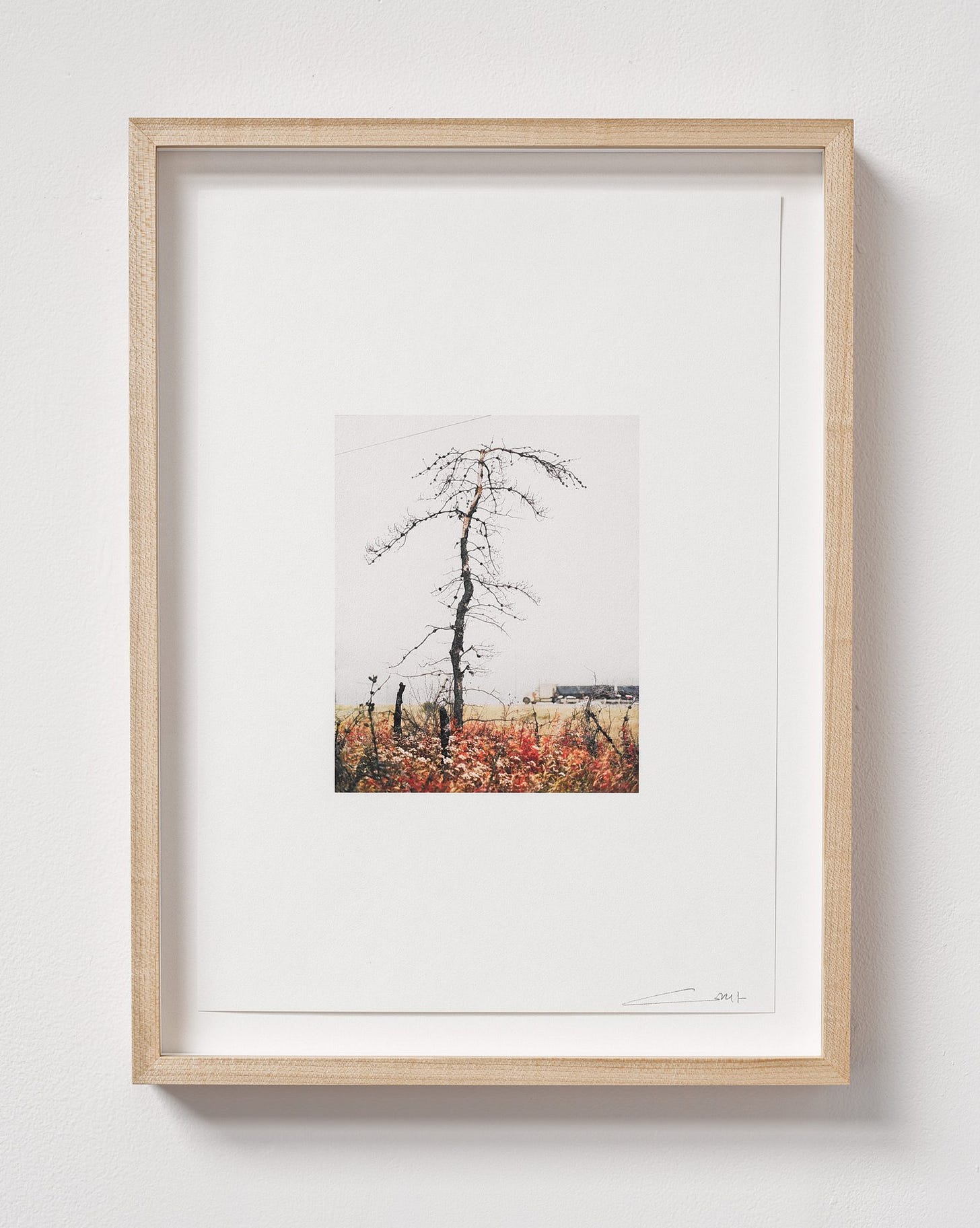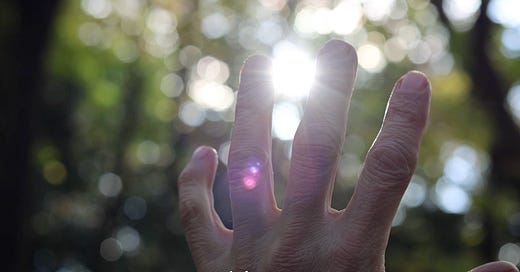Stillness, and Listening : A Spring Reflection from Holland Park
Release of the introduction film created to mark the beginning of a residency — an invitation to sense, reflect, and reconnect with the Earth.
Hello everyone — Kia ora,
Today marks the opening of the Spring exhibition at Daisy Green Holland Park. This exhibition features the works of Katrina Blannin, Juan Bolivar, and Karen Loader, curated by Justin Hibbs. He describes it as a sensory dance—"an engagement with the ongoing legacies of abstraction, not so much exercises in formal balance but more an opportunity to generate unexpected clashes, twists and turns that confound expectation."
I'm thrilled to have these works here and can’t wait to meet everyone this evening.
As the park shifts into its season of renewal, I’m releasing a video we made in the autumn, publicly for the first time. Filmed during the early months of my Artist in Residence, this short piece reflects on my experience with climate challenges—from severe catastrophe to the sublime and unfathomable—and how this relates to life in a city park in West London, with the abundant joy of old growth and space for friends and dogs alike. - Watch the full video below.
In the time since making the film, I’ve come to know the park more thoroughly: the meeting places, the quiet places, the sports areas, and—soon—the open air opera stage. I’ve had the pleasure of inviting old friends and welcoming new ones. I’ve also learned from many others about their stories and ways to develop our senses in this space. It is common ground, a shared landscape that asks us to listen, adapt, and (re)connect. New photographs are beginning to emerge too.
Here’s an outline for May:
Spring Private View
2 May · 6–8 PM · Daisy Green, Holland Park
Sensing Earth Workshops
London | Every Sunday · 10–12 PM · Daisy Green, Holland Park - Book Here
Zurich | with Adriana Pages Book Here
A Big Book Fair x Peckham 24
16–18 May · Copeland Park, Peckham
Nature(Mother) Re•volve Gathering
Online · 6, 13, 20 May
Percy St - Artist Residency
May - August
Fort McMurray Fundraising Prints on Metalable
Help us to complete the 10 year arc by returning to the site of Canada’s largest evacuation from a natural disaster.

Holland Park Flora
As our work continues, more plans are taking shape in and around Holland Park—54 acres shaped by storms, revolutions, and the rhythms of fashionable life. It holds 218 plant species on ancient London Clay and reminds us that the land holds memory.
Holland Park stands on ground rich in historical and ecological legacy. Once the private grounds of Cope Castle, built in the early 17th century by Sir Walter Cope, it later became known as Holland House after passing to the Earl of Holland. Severely damaged during the Blitz of 1940, the ruins now frame the park’s character—a layered space where aristocratic gardens transitioned into public sanctuary. In 1953, the grounds were formally opened to the public, a post-war gesture symbolising renewal, shared heritage, and the democratisation of green space.
Holland Park Flora was surveyed in 1999 to find diversity, reflecting the mix of formal gardens, meadows, woodlands, and ornamental planting that characterise the site. The 1999 survey catalogued over 200 species of vascular plants, including:
Native Woodland Species:
Bluebell (Hyacinthoides non-scripta), Dog’s Mercury (Mercurialis perennis), Wood Avens (Geum urbanum), and Bramble (Rubus fruticosus agg.) indicate remnants of ancient woodland ground flora, particularly in the North-West woodland zone.
Grassland & Meadow Plants:
Areas of grassland support species such as Common Knapweed (Centaurea nigra), Meadow Buttercup (Ranunculus acris), and Bird’s-foot Trefoil (Lotus corniculatus), contributing to pollinator biodiversity.
Introduced & Garden Escapees:
Several non-native species, such as Japanese Knotweed (Fallopia japonica) and Snowberry (Symphoricarpos albus), have established in the park. Their presence reflects historical planting trends and ongoing ecological pressures.
Ornamental & Historic Plantings:
The formal gardens include a range of decorative species planted for aesthetic purposes, including roses, ornamental grasses, and exotic shrubs—some dating back to the 19th-century redesigns.
Ecological Notes:
The park’s mosaic of habitats offers refuge for a range of invertebrates and birds. Management practices such as reduced mowing, deadwood retention, and shrub-layer diversification are noted as supporting biodiversity.Today, remnants of formal design merge with wilder pockets of woodland and meadow, creating rare biodiversity in the heart of London. The park’s evolution reflects broader societal changes: from aristocratic estate to wartime casualty, and from public park to a living ecological preserve. Its current form—home to ancient oaks, wildflowers, and birds of prey—represents a living archive of urban adaptation.
This blend of heritage and habitat makes Holland Park not only a cultural landmark but also a resilient landscape—one that continues to adapt and renew itself as part of London’s ecological future.
This video is an invitation. To pause. To sense. To consider what the Earth is asking of us and how we might care for it.
If this resonates, I invite you to leave a comment, forward this to a friend, or share your own reflections on the landscapes that have shaped you.
This work contributes to global conversations on fire governance, ecological resilience, and cultural renewal.
Thank you for being part of this journey. If the video speaks to you, please share it with someone who cares deeply for the land—or leave a comment to add your voice to this unfolding conversation.
Special Thanks
To Daisy Green for hosting the residency and Spring exhibition, to Justin Hibbs for curating with vision and care, and to fellow exhibiting artists Katrina Blannin, Juan Bolivar, and Karen Loader. Also to Jihyun "Kimmy" Kim for the her nurturing friendship and belief in the project. Deep thanks to everyone who walked and spoke with me in Holland Park over the seasons—you have shaped this work more than you know. A.M.





Loved the video and voice over.
Great article, enjoyed the description of the native and exotic flora.